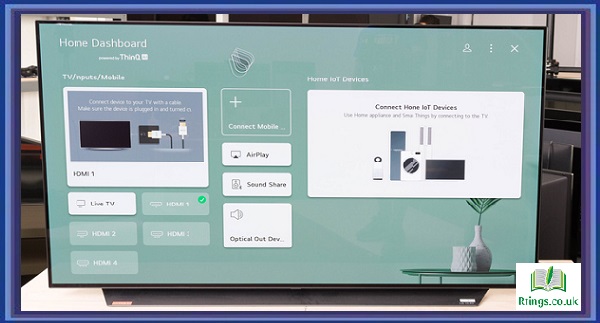A soundbar is a popular audio accessory that enhances the audio quality of your TV viewing experience without the need for a complex surround sound system. Connecting a soundbar to your TV using HDMI is a common and efficient method that allows you to enjoy better audio clarity, improved bass, and, in some cases, simulated surround sound. This guide will walk you through connecting your soundbar to your TV using an HDMI cable, providing the steps and insights to optimize your audio setup.
Understanding HDMI and Soundbars
High-Definition Multimedia Interface (HDMI) is a digital audio and video interface that offers superior audio and video quality compared to analog connections. Soundbars, on the other hand, are designed to provide better sound quality than your TV’s built-in speakers. Combining these technologies through an HDMI connection can result in a more immersive and enjoyable entertainment experience.
Advantages of Using HDMI for Soundbar Connection
Audio Quality: HDMI supports high-quality audio formats like Dolby TrueHD and DTS-HD Master Audio. This ensures you can fully utilize your soundbar’s capabilities and experience clear and detailed audio.
Single Cable Solution: HDMI serves as an audio and video connection, simplifying your setup by reducing the required cables. This results in a neater and more organized entertainment center.
Audio Control: Many TVs allow you to control the volume of your soundbar using the TV’s remote control, streamlining the overall user experience.
Compatibility: HDMI is a standard connection option on most modern TVs and soundbars, ensuring compatibility across various devices.
Steps to Connect a Soundbar to a TV Using HDMI
Gather Your Equipment: Ensure you have your TV, soundbar, HDMI cable, and remote controls for both devices ready.
Locate HDMI Ports: Identify the HDMI ports on both your TV and soundbar. Most modern TVs have multiple HDMI ports labeled with numbers or names like “HDMI 1,” “HDMI 2,” etc.
Choose the Right HDMI Cable: Use a high-quality cable that supports the necessary features, such as HDMI ARC (Audio Return Channel), if your devices have this capability.
Connect the HDMI Cable: Plug one end of the HDMI cable into the HDMI OUT or HDMI ARC port on the soundbar. Then, plug the other end into your TV’s HDMI IN or ARC port.
Enable HDMI ARC: If your TV and soundbar both support HDMI ARC, enable this feature in the TV’s settings menu. HDMI ARC allows audio to travel both ways, eliminating the need for a separate audio connection between the TV and the soundbar.
Select the Correct Input Source: On your TV, use the remote control to navigate to the input source corresponding to the HDMI port you connected the soundbar to.
Configure Sound Settings: Access your TV’s audio settings and choose the audio output to be directed to the soundbar. Depending on your TV model, you may need to select “HDMI ARC” or “External Speakers.”
Test the Setup: Play audio or video content on your TV to ensure sound comes from the soundbar. Adjust the volume using the TV remote to confirm that the soundbar functions correctly.
Optimizing Your Soundbar and TV Settings
To make the most of your soundbar setup, consider adjusting your TV and soundbar’s audio and video settings. Some soundbars come with various audio modes, equalizer settings, and even room calibration features. Experiment with these settings to find the audio profile that best suits your preferences and the content you’re watching.
Conclusion
Connecting your soundbar to your TV using an HDMI cable is a straightforward process that can significantly enhance your audio experience while watching movies, TV shows, and playing games. You can create a more immersive and enjoyable home entertainment setup by utilizing the advantages of HDMI technology, such as superior audio quality, simplified cabling, and volume control integration. Whether a casual viewer or a dedicated audiophile, an adequately connected HDMI soundbar can elevate your audiovisual experience.
Frequently Asked Questions (FAQs)
Can I use any HDMI cable to connect my soundbar to my TV?
While most HDMI cables will work for connecting your soundbar to your TV, it’s recommended to use an HDMI cable that supports features like HDMI ARC (Audio Return Channel) for the best functionality. HDMI ARC allows audio to travel between your TV and soundbar, enabling features like volume control through your TV remote and simplifying the overall setup. If your TV and soundbar have HDMI ARC support, a compatible HDMI cable ensures a smoother and more integrated audio experience. However, a standard HDMI cable should still transmit audio if your devices don’t support HDMI ARC. Still, you may need to control the soundbar’s volume separately, typically using its remote control.
Can I use any HDMI cable to connect my soundbar to my TV?
You can use any HDMI cable to connect your soundbar to your TV. However, for optimal functionality, it’s recommended to use an HDMI cable that supports an Audio Return Channel (ARC) if both your TV and soundbar have this feature. ARC allows two-way communication between the devices, enabling features like volume control through your TV remote and simplified setup. If your TV and soundbar don’t support ARC, a standard HDMI cable will still transmit audio, but you might need to control the soundbar’s volume using its remote. Choosing a suitable line based on your devices’ capabilities is essential to ensure the best audio experience.
Do all soundbars require HDMI ARC for connection to a TV?
No, not all soundbars require HDMI ARC for connection to a TV. While HDMI ARC offers a simplified setup and integrated remote control functionality, many soundbars can be connected using regular HDMI inputs. The choice between using an HDMI ARC or a standard HDMI connection depends on your soundbar’s features and preferences. If your soundbar supports HDMI ARC and you want the convenience of using a single remote for volume control, you can take advantage of this feature. However, your soundbar doesn’t have HDMI ARC or prefers using your soundbar’s remote for volume adjustments. In that case, a standard HDMI connection will allow you to enjoy improved audio quality without complication.






